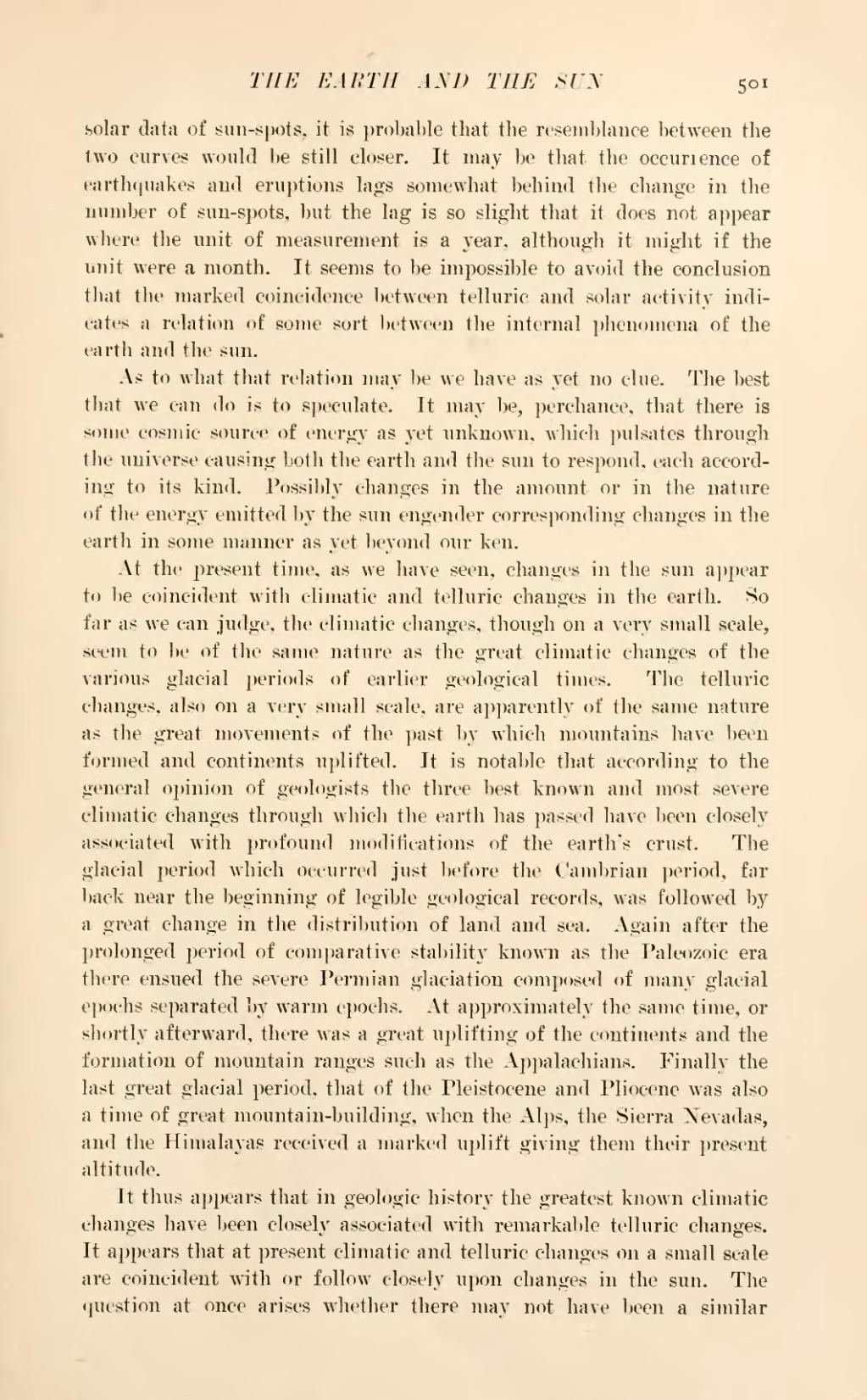solar data of sun-spots, it is probable that the resemblance between the two curves would he still closer. It may be that the occurience of earthquakes and eruptions lags somewhat behind the change in the number of sun-spots, but the lag is so slight that it does not appear where the unit of measurement is a year, although it might if the unit were a month. It seems to be impossible to avoid the conclusion that the marked coincidence between telluric and solar activity indicates a relation of some sort between the internal phenomena of the earth and the sun.
As to what that relation may be we have as yet no clue. The best that we can do is to speculate. It may be, perchance, that there is some cosmic source of energy as yet unknown, which pulsates through the universe causing both the earth and the sun to respond, each according to its kind. Possibly changes in the amount or in the nature of the energy emitted by the sun engender corresponding changes in the earth in some manner as yet beyond our ken.
At the present time, as we have seen, changes in the sun appear to be coincident with climatic and telluric changes in the earth. So far as we can judge, the climatic changes, though on a very small scale, seem to be of the same nature as the great climatic changes of the various glacial periods of earlier geological times. The telluric changes, also on a very small scale, are apparently of the same nature as the great movements of the past by which mountains have been formed and continents uplifted. It is notable that according to the general opinion of geologists the three best known and most severe climatic changes through which the earth has passed have been closely associated with profound modifications of the earth's crust. The glacial period which occurred just before the Cambrian period, far back near the beginning of legible geological records, was followed by a great change in the distribution of land and sea. Again after the prolonged period of comparative stability known as the Paleozoic era there ensued the severe Permian glaciation composed of many glacial epochs separated by warm epochs. At approximately the same time, or shortly afterward, there was a great uplifting of the continents and the formation of mountain ranges such as the Appalachians. Finally the last great glacial period, that of the Pleistocene and Pliocene was also a time of great mountain-building, when the Alps, the Sierra Nevadas, and the Himalayas received a marked uplift giving them their present altitude.
It thus appears that in geologic history the greatest known climatic changes have been closely associated with remarkable telluric changes. It appears that at present climatic and telluric changes on a small scale are coincident with or follow closely upon changes in the sun. The question at once arises whether there may not have been a similar
